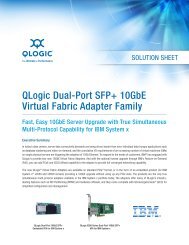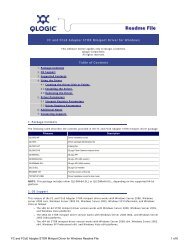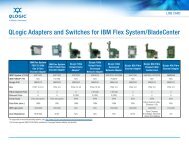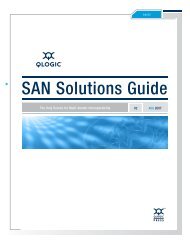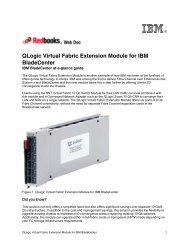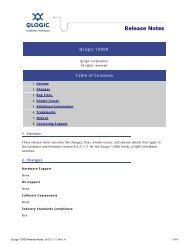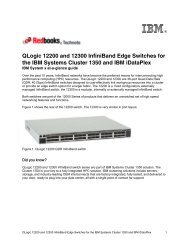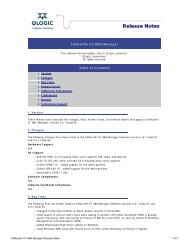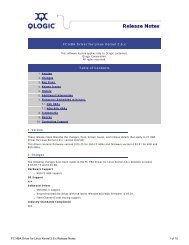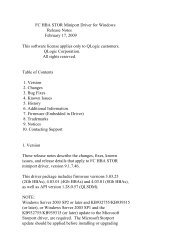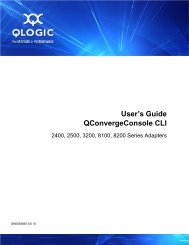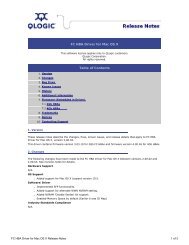Chapter 1. IBM Flex System FC3171 8 Gb SAN Switch - QLogic
Chapter 1. IBM Flex System FC3171 8 Gb SAN Switch - QLogic
Chapter 1. IBM Flex System FC3171 8 Gb SAN Switch - QLogic
You also want an ePaper? Increase the reach of your titles
YUMPU automatically turns print PDFs into web optimized ePapers that Google loves.
Using Call Home<br />
The Call Home feature allows you to configure switches to send alerts regarding<br />
events and faults to Email addresses. Examples of Email destinations are pagers,<br />
cell phones, NOC (Network Operations Center) operators/applications, and<br />
support organizations. You can configure the type of events and where the alerts are<br />
sent. Use the Call Home Setup dialog (Figure 28) to configure call home parameters.<br />
To display the Call Home Setup dialog, open the <strong>Switch</strong> menu, select Call Home,<br />
and select Setup.<br />
Figure 28. Call Home Setup dialog<br />
Table 18 lists the fields in the Call Home Setup dialog.<br />
Table 18. Call Home Setup dialog fields<br />
Setting<br />
Primary SMTP: (active)<br />
Primary SMTP Server Address:<br />
Primary SMTP Server Port:<br />
Value<br />
The "(active)" indicates the Primary SMTP (Simple Mail<br />
Transfer Protocol) is the SMTP server that CallHome<br />
will use when transmitting Email messages. CallHome<br />
operates as an SMTP client, or more correctly, an SMTP<br />
sending agent.<br />
After any system configuration, the Primary SMTP<br />
server will always become the active SMTP, provided it<br />
is enabled and has a non-default address defined<br />
(0.0.0.0 is the default).<br />
This setting is the IP address of the primary (first)<br />
SMTP server.<br />
This setting is the service port number that the primary<br />
SMTP server is listening on to accept connections from<br />
SMTP sending agents.<br />
<strong>Chapter</strong> 4. Managing switches 75



